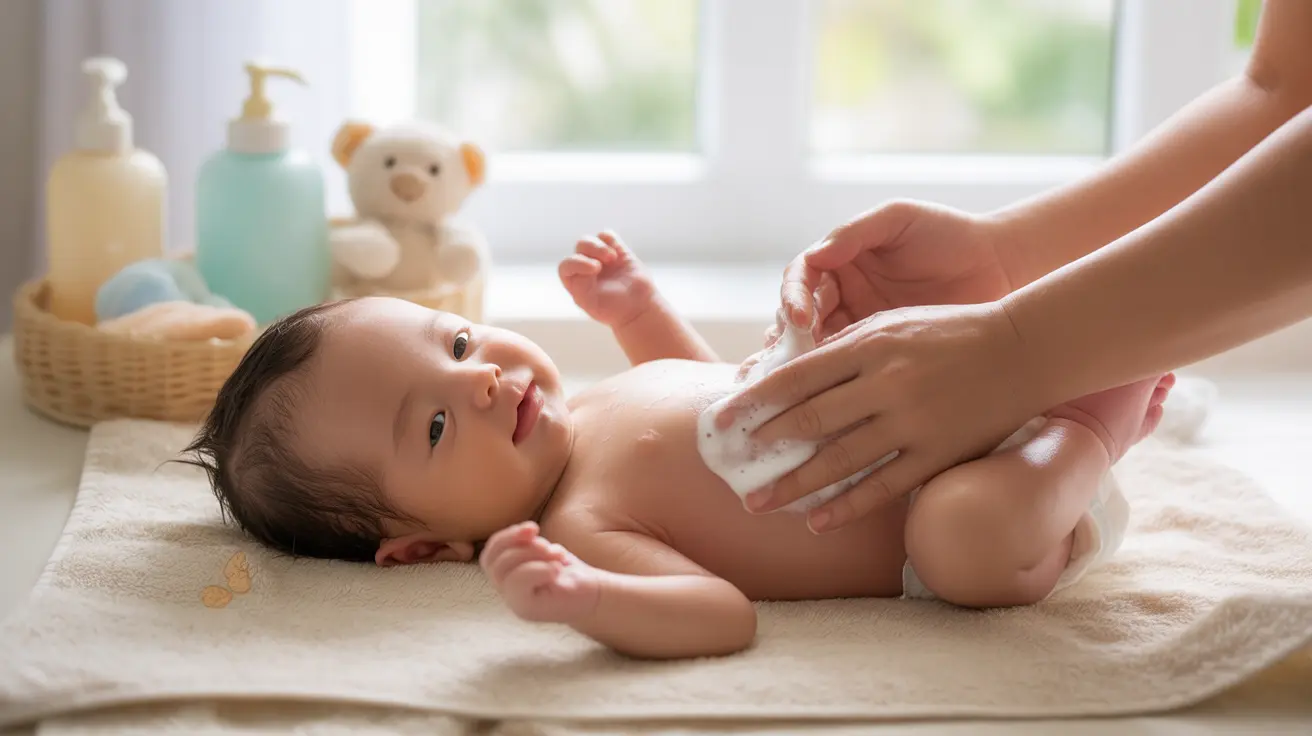Welcoming a newborn brings joy and many new responsibilities, including learning how to properly bathe your baby while their umbilical cord stump is still attached. Understanding the right bathing techniques during this delicate period is crucial for your baby's health and comfort.
This comprehensive guide will walk you through safe bathing practices for newborns with umbilical cords, helping you maintain proper hygiene while preventing complications.
Understanding Sponge Baths for Newborns
Until the umbilical cord stump falls off naturally, sponge baths are the safest way to keep your newborn clean. This method helps prevent infection and promotes proper healing of the umbilical area.
Essential Supplies for Sponge Bathing
Gather these items before starting your baby's bath:
- Soft washcloth or sponge
- Mild, fragrance-free baby soap
- Clean, warm towel
- Fresh diaper and clothes
- Warm water (around 90-100°F)
- Clean cotton balls
- Small bowl or basin
Proper Sponge Bath Technique
Follow these steps to give your newborn a safe and comfortable sponge bath:
Preparation Steps
- Choose a flat, secure surface
- Ensure room temperature is warm (75-80°F)
- Keep all supplies within arm's reach
- Never leave your baby unattended
Bathing Process
Start by washing your hands thoroughly. Undress your baby gradually, keeping them partially wrapped in a towel to maintain warmth. Begin with the face, using plain warm water and a soft cloth, then work your way down the body, paying special attention to skin folds.
Umbilical Cord Care During Bathing
Special attention to the umbilical area is essential during this period. Keep the stump clean and dry to prevent infection and promote healing. After bathing, thoroughly pat the area dry with a clean cloth or cotton ball.
Important Safety Guidelines
Follow these crucial safety measures when bathing your newborn:
- Never submerge the umbilical stump in water
- Keep the cord area clean and dry between baths
- Avoid using alcohol or other substances on the stump
- Check the temperature of all water and surfaces
- Maintain constant physical contact with your baby
Frequency and Timing of Baths
Newborns don't need daily baths. Two to three sponge baths per week is typically sufficient, unless they get particularly messy. Choose a time when your baby is calm and alert, preferably between feedings.
Frequently Asked Questions
How do I safely give my newborn a sponge bath while the umbilical cord stump is still healing? Use a soft washcloth with warm water and mild soap, carefully cleaning around but not directly on the stump. Keep your baby warm by exposing only the area being cleaned while keeping the rest covered.
Why is it important to keep the umbilical cord stump dry during newborn baths? Keeping the stump dry prevents bacterial growth and infection, allowing it to heal properly and fall off naturally. Moisture can delay healing and increase the risk of complications.
When can I start giving my baby a full tub bath after the umbilical cord falls off? Once the umbilical stump falls off and the area is completely healed (typically 1-2 weeks after birth), you can begin giving your baby full tub baths. The area should be dry and show no signs of drainage or redness.
What signs of infection should I watch for around my baby's umbilical cord stump? Watch for redness or swelling around the base, yellow or foul-smelling discharge, bleeding, or signs that the area is causing pain when touched. Contact your healthcare provider if you notice any of these symptoms.
How often should I bathe my newborn before the umbilical cord stump falls off? Two to three sponge baths per week are sufficient for most newborns. Daily baths aren't necessary and could irritate your baby's sensitive skin or interfere with the natural healing process of the umbilical stump.




